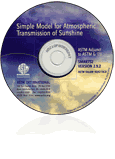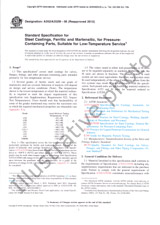We need your consent to use the individual data so that you can see information about your interests, among other things. Click "OK" to give your consent.

ASTM ADJG173CD
Adjunct to G173 -- Simple Model for Atmospheric Transmission of Sunshine (SMARTS2 Version 2.9.2)
Translate name
The information about the standard:
Designation standards: ASTM ADJG173CD
Note: Adjunct of the standard
SKU: NS-1150468
Approximate weight : 300 g (0.66 lbs)
Country: American technical standard
Category: Technical standards ASTM
Annotation of standard text ASTM ADJG173CD :

SMARTS2 Version 2.9 - Approximately 20 simple input parameters read by SMARTS2 (Simple Model of the Atmospheric Radiative Transfer of Sunshine) code to produce a terrestrial solar spectral distribution (power as a function of wavelength) transmitted through the atmosphere in the prescribed "state." 32 different optical parameters (transmission functions, optical depths, absorption/scattering properties) are also computed and can be examined as text and in spreadsheets. Output is important for any application with spectral sensitivity to solar radiation (weathering/durability, day lighting, alternative energy, fenestration, etc.)
This standard belongs to the adjunct
Standard Tables for Reference Solar Spectral Irradiances: Direct Normal and Hemispherical on 37? Tilted Surface
Standard published on 1.3.2023
Selected format:Show all technical information.
We recommend:
Technical standards updating
Do you want to make sure you use only the valid technical standards?
We can offer you a solution which will provide you a monthly overview concerning the updating of standards which you use.
Would you like to know more? Look at this page.



 (80.00 USD)
(80.00 USD)
 Cookies
Cookies
